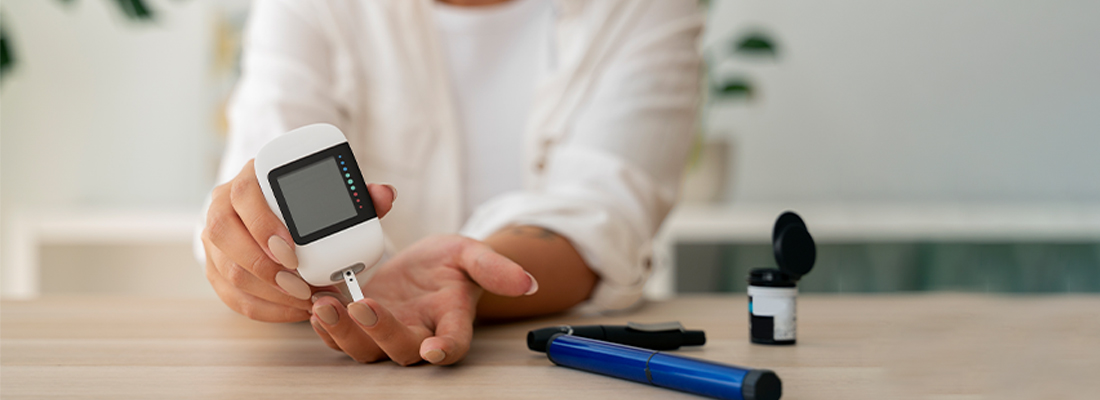
The Truth Behind Life Expectancy in Type 1 Diabetes
It’s easy to assume that type 1 diabetes limits your lifespan, but thanks to medical advances, that’s no longer always true. Still, a pressing question remains: How does type 1 diabetes life expectancy compare to that of the general population?
While the condition can impact longevity, today’s numbers are far more encouraging. Type 1 diabetes life expectancy depends on multiple factors including access to care, lifestyle habits, mental health, and new medical technologies.
Understanding the Impact: Why Life Expectancy is Affected
It’s not the diagnosis itself, but how it’s managed that influences outcomes. Uncontrolled blood glucose over time can lead to complications that shorten type 1 diabetes life expectancy:
- Cardiovascular Disease: High blood pressure, heart attacks, and strokes are more common in people with diabetes.
- Kidney Disease: Damaged blood vessels can lead to diabetic nephropathy.
- Neuropathy: Nerve damage, especially in extremities, may impair mobility or cause chronic pain.
- Retinopathy: Long-term elevated glucose can damage the eyes, leading to vision loss.
On top of these physical issues, living with chronic health problems can take a mental toll, increasing the risk of depression and anxiety, further complicating disease management.
What the Numbers Really Say: A Global Perspective
Statistics on type 1 diabetes life expectancy vary, but a consistent trend is emerging: the gap is narrowing.
A 2021 global report estimated that individuals with type 1 diabetes may live 10–12 years less than their peers. However, a 2020 Bulgarian study found a smaller difference; life expectancy was 70.96 years for those with the condition, compared to 74.8 for the general population.
This improvement is largely credited to:
- Enhanced insulin therapies
- Continuous glucose monitoring (CGM)
- Patient education
- Preventive screenings
Balancing the Factors: Lifestyle, Genetics, and Innovation
The average life expectancy type 1 diabetes depends not just on medical care, but also on how the condition is managed day-to-day. Key contributing factors include:
- Glycemic Control: Keeping blood sugar within a healthy range reduces long-term complications. A1C levels serve as an important metric here.
- Nutrition & Activity: A diet rich in fiber and low-glycemic foods, combined with regular exercise, supports cardiovascular health.
- Medication Adherence: Timely insulin and appropriate prescriptions for blood pressure or cholesterol make a big difference.
- Mental Health: Emotional well-being is often neglected but crucial. Depression or stress can derail self-care habits.
- Avoiding Smoking and Excess Alcohol: Both habits exacerbate complications and significantly lower type 1 diabetes life expectancy.
Are People with Type 1 Diabetes Living Longer Today?
Yes, and that’s a powerful sign of progress. Decades ago, those diagnosed in childhood often didn’t live past their 40s. Today, many are reaching their 60s, 70s, and beyond.
Improved access to care, better monitoring tools, and patient education are helping average life expectancy type 1 diabetes come closer to general population levels.
The Tradeoffs: Daily Management vs. Long-Term Health
Living with type 1 diabetes requires constant decision-making. Every day involves:
- Checking glucose multiple times
- Adjusting insulin doses
- Planning meals and exercise
- Monitoring for symptoms or changes
This can be exhausting. However, the payoff is worth it, that is, fewer hospital visits, delayed or avoided complications, and longer life expectancy.
On the other hand, poor disease management often leads to rapid health decline, even in young people. That’s why early education, emotional support, and continuous care are crucial.
Why Guidelines Matter More Than You Think
Type 1 diabetes treatment guidelines are based on decades of clinical research. They aren’t just checklists; they’re survival strategies.
These include:
- Routine A1C testing
- Annual eye and foot exams
- Blood pressure and cholesterol screenings
- Vaccine recommendations
- Mental health assessments
Following these guidelines can significantly improve type 1 diabetes life expectancy, especially when treatment is personalized and started early.
How Personalized Care Makes a Difference
Everyone’s journey with type 1 diabetes is different. That’s why care needs to be tailored based on age, lifestyle, co-existing conditions, and even genetics.
Examples of tailored care:
- Children & Teens: Require support around growth and development; pediatric endocrinologists guide family-centered care.
- Young Adults: Often need help managing transitions—college, work, independence—and maintaining consistency in care.
- Older Adults: Must address increased cardiovascular risks and age-related comorbidities with a comprehensive plan.
This individualized approach often improves treatment adherence and enhances average life expectancy type 1 diabetes.
The Role of Technology in Extending Life Expectancy
If there’s a game-changer in diabetes care, it’s technology.
Today’s devices are smarter, faster, and more user-friendly:
- CGMs: Deliver real-time glucose readings and trend patterns.
- Insulin Pumps: Provide more accurate, consistent insulin delivery than injections.
- Artificial Pancreas Systems: Combine pumps and sensors to automate insulin delivery, reducing high and low blood sugar episodes.
These tools empower users, reduce complications, and close the gap in type 1 diabetes life expectancy.
Common Challenges That Persist
Despite all the progress, challenges remain:
- Health Disparities: Access to care varies based on geography and socioeconomic status.
- High Costs: Insulin, devices, and appointments add up, often leading to financial strain.
- Mental Health Issues: Diabetes burnout is real. Anxiety and depression affect disease management.
- Online Misinformation: Conflicting advice can confuse patients and lead to risky decisions.
Addressing these barriers is essential if we aim to improve the average life expectancy type 1 diabetes across all communities.
Simple Lifestyle Changes That Add Years
While clinical care is key, everyday habits can significantly improve outcomes. Here are impactful, easy-to-adopt strategies:
- Meal Planning: Eat regularly. Choose complex carbs, lean protein, and fiber to avoid sugar spikes.
- Stay Active: Aim for at least 150 minutes of moderate activity weekly, walking, cycling, or dancing.
- Track Metrics: Monitor glucose, A1C, cholesterol, and blood pressure.
- Prioritize Sleep: Poor sleep can affect insulin sensitivity.
- Seek Support: Join support groups or talk with friends; emotional connection enhances motivation.
These habits, over time, can dramatically increase type 1 diabetes life expectancy.
What Should You Ask Your Doctor?
Knowledge is power. During checkups, ask:
- Are my A1C levels within range?
- Should I adjust my insulin dose?
- What annual screenings should I schedule?
- Are there new devices or technologies I should consider?
- Would I benefit from being a diabetes educator, dietitian, or therapist?
These questions help personalize care and ensure you’re on the best path to longevity.
Final Thoughts: It’s About More Than Numbers
The conversation around type 1 diabetes life expectancy should go beyond just how long people live. It’s also about how well they live.
While some data reflects a slightly lower average life expectancy type 1 diabetes, that doesn’t define the whole story. Behind the statistics are real people, students, parents, artists, athletes, who live rich, meaningful lives.
By staying informed, empowered, and engaged in their care, individuals can shift the narrative from “managing diabetes” to “mastering life with diabetes.”





